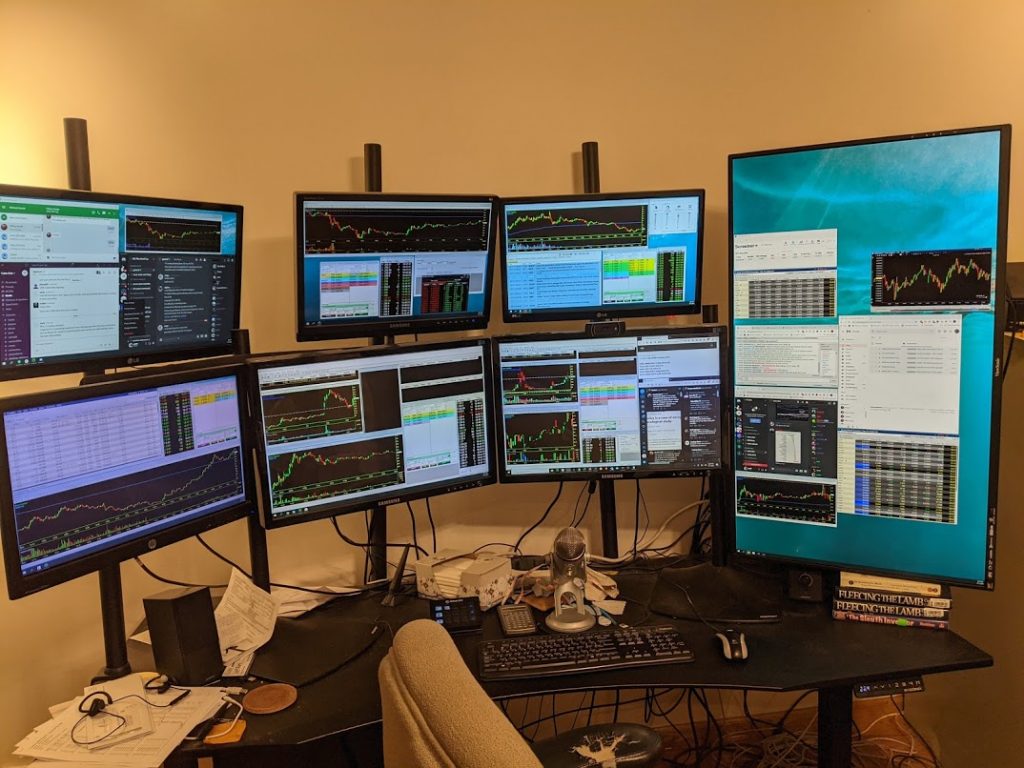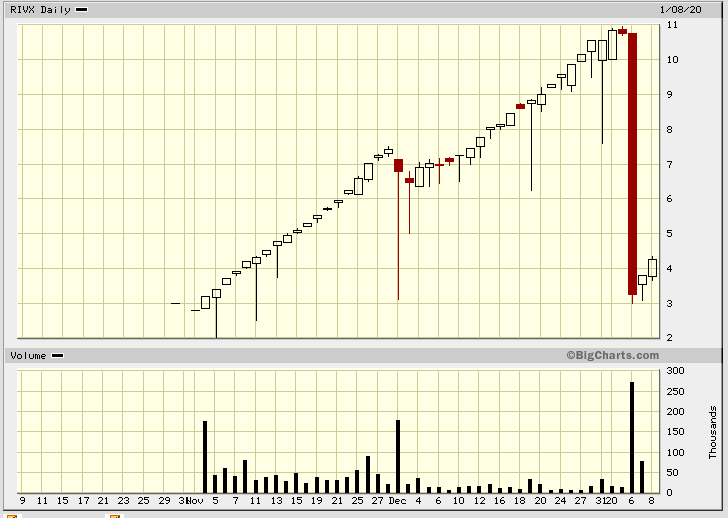For those who dislike microcap fraud 2020 started out right with three related SEC lawsuits and a related criminal complaint against two of the individuals that the SEC sued.
All the cases were filed in US District Court in the Southern District of New York. The case numbers below are linked to the case dockets on CourtListener.
The three civil cases:
Securities and Exchange Commission v. Ulrik Debo (1:20-cv-00006)
Complaint (pdf)
SEC Press Release
Securities and Exchange Commisison v. Steve M. Bajic, Rajesh Taneja, Norfolk Heights Ltd., Fountain Drive Ltd., Island Fortune Global Ltd., Crystalmount Ltd., Wisdom Chain Ltd., SSID Ltd., Sure Might Ltd., Tamarin Investments Inc., Kenneth Ciapala, Anthony Killarney, Blacklight S.A., Christopher Lee MicKnight, and Aaron Dale Wise (1:20-cv-00007)
Complaint (pdf)
SEC Press Release
Securities and Exchange Commission v. Kenneth Ciapala & Blacklight S.A. (1:20-cv-00008)
Complaint (pdf)
SEC Press Release
The criminal case is:
United States v. Kenneth Ciapala, Ulrik Debo, and Blacklight S.A. (1:19-cr-00874)
USAO Press Release
Because of how PACER & CourtListener deal with criminal cases, there are four different dockets on CourtListener (one for each defendant plus one for all defendants):
1:19-cr-00874 -GBD – All defendants
1:19-cr-00874-GBD-1 – Ciapala, Kenneth
1:19-cr-00874-GBD-2 – Debo, Ulrik
1:19-cr-00874-GBD-3 – Blacklight, S. A.
The indictment (pdf) was filed on December 5, 2019 and unsealed on January 2, 2020 after Ulrik Debo and Kenneth Ciapala were arrested in the United Kingdom. The US is currently seeking their extradition.
Read Mike Caswell’s summary of some of the charges at StockWatch (free registration required).
As always, the charges are only allegations until proven in a court of law.
Interestingly, the USAO press release includes a quote from FBI Assistant Director William F. Sweeney, Jr.:
“As a major facilitator of market manipulation schemes, Blacklight, S.A, allegedly enabled numerous ‘pump and dumps’ over the course of six years. Disrupting the orchestrators of illegal financial activity is a top priority for the FBI’s securities fraud team, and we consider today’s indictment of Blacklight, its founder and principal owner Kenneth Ciapala, and co-conspirator Ulrik Debo an important step in that mission.”
USAO Press Release
Summary from the USAO press release of the criminal charges:
As alleged, from at least 2013 through December 2019, CIAPALA and his firm, BLACKLIGHT, as well as others, conspired to defraud the investing public by orchestrating and facilitating the manipulation of multiple publicly traded stocks, commonly referred to as “pump and dump” schemes. The vast majority of the stocks that CIAPALA, BLACKLIGHT, DEBO, and their co-conspirators sought to manipulate were “penny” or “microcap” stocks that traded in the United States on the over-the-counter (“OTC”) market. In executing these pump and dump schemes, CIAPALA, BLACKLIGHT, DEBO, and their co-conspirators (i) secretly amassed beneficial ownership of all, or substantially all, of the stock of certain publicly traded companies; (ii) began manipulating the price and demand for these stocks through, among other means, the release of materially false information to the investing public and manipulative trading practices, thereby causing the share price of these stocks to become artificially inflated; and (iii) sold out of their secretly-amassed positions at artificially inflated values at the expense of the investing public.
CIAPALA, using his firm BLACKLIGHT, primarily furthered the stock manipulation scheme by helping other participants in the scheme to obscure their beneficial ownership and control of all or substantially all of the shares of companies whose securities they sought to manipulate. CIAPALA caused BLACKLIGHT to establish nominee entities that were registered in the names of various third parties to hold the shares that were, in reality, beneficially owned and controlled by the scheme participants. In order to obscure their ownership interests, CIAPALA, BLACKLIGHT, DEBO, and others typically caused these nominee entities’ holdings to be structured so as to ensure that no single nominee entity held more than five percent of the outstanding stock of any of the relevant companies.
CIAPALA also caused BLACKLIGHT to open bank accounts in the names of these nominee entities and to trade shares owned by these nominee entities through various brokerage accounts. Through BLACKLIGHT, CIAPALA exercised trading authority over these nominee entities’ shares, and CIAPALA directed brokers to execute trades on behalf of these nominee entities in furtherance of the stock manipulation scheme. After CIAPALA, BLACKLIGHT, DEBO, and others participating in the scheme had obtained control of all or substantially all of the shares of a company, the scheme participants manipulated the share price and trading volume of the stock of the company. This typically occurred through a promotional campaign and through certain manipulative trading practices.
With respect to the promotional campaign, CIAPALA, BLACKLIGHT, DEBO, and others participating in the scheme caused promotional materials to be distributed to the investing public that contained exaggerated and, at times, false claims about the company whose stock they sought to manipulate. The scheme participants concealed from the investing public that these promotional materials were financed and created at the direction of those who beneficially owned and controlled substantially all of the shares of the relevant company that was the subject of the promotion.
In addition, to drive investor demand and artificially inflate the share price, CIAPALA, BLACKLIGHT, DEBO, and other participants also engaged in manipulative trading activity in order to artificially increase the trading volume and share price of the issuers whose stock they sought to manipulate. This manipulative trading activity included “match” trades whereby the scheme participants caused multiple nominee entities they controlled to essentially trade with one another to create the false appearance of trading volume and demand for the stock.
USAO Press Release
According to the SEC complaint (pdf) against Ciapala & Blacklight S.A., Ciapala previously worked at “EuroHelvetia Trust Co., SA (‘EuroHelvetia’), a wealth administration firm based in Geneva, Switzerland. EuroHelvetia provided services to microcap fraudsters similar to those now provided by Blacklight.”
Stocks involved in the schemes
The SEC complaint against Bajic et al (pdf) alleges the group sold at least 7.2m shares worth $7.2m of stock in Blake Insomnia Therapeutics (OTC: BKIT) through the end of May 2017. The complaint does not discuss any actions after that date. Interestingly, after a name change (in June 2019 per OTC Markets), the same stock, now known as Biohemp International (OTC:BKIT), was suspended for two weeks by the SEC following a boiler-room pump and dump. I do not know if anyone mentioned in these complaints was selling shares into that stock promotion or if it was some new shareholder.
Other stocks sold by the group mentioned in the SEC complaint (pdf) against Bajic et al. are Pacificorp Holdings Ltd. (OTC:PCFP), Drone Guarder, Ltd (OTC: DRNG), VIBI, BLTO, GLBB, and SPRN.
The SEC complaint against Ulrik Debo (pdf) mentions only one company, Herbatech Life Inc. (OTC: EVTP). The SEC complaint (pdf) against Blacklight S.A. and Kenneth Ciapala mentions a different company, EMS Find Inc. (was OTC: EMSF, now OTC:INTV).
None of the companies that allegedly had their stocks manipulated were named as defendants in the suits.
Disclaimer: No position in any company mentioned. Aaron Wise is an acquaintance of mine and we have been to dinner together a few times over 5 years ago; the last time I know that we corresponded via email was in 2013. I have no relationship with anyone else mentioned. This blog has a terms of use that is incorporated by reference into this post; you can find all my disclaimers and disclosures there as well.




